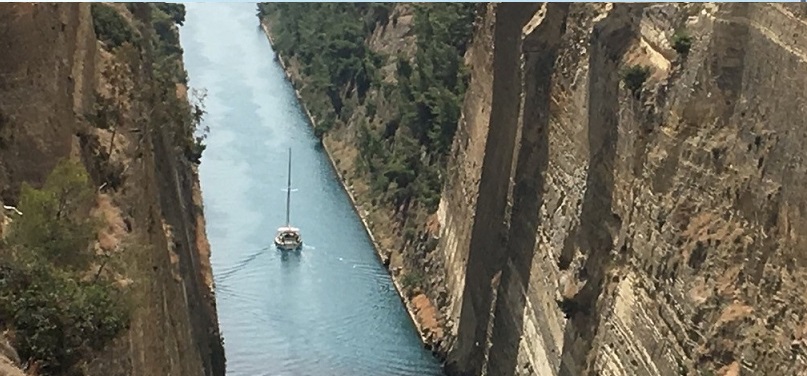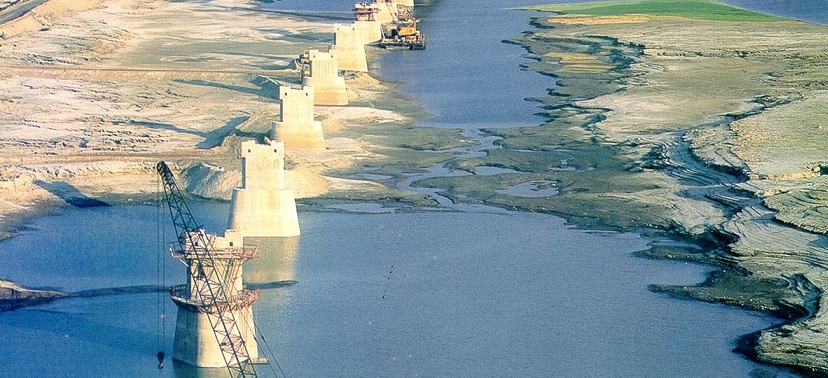Research projects
EXPERIMENTAL PROJECTS
The following research projects and applications were carried out in the Soil Mechanics laboratory.
“Experimental Investigation οf Colloidal Silica Gel Cemented Sand Behaviour’’, (funding: NTUA’s Basic Research Framework Program, PEVE). 2021-2023. This research program consists of an experimental investigation of cemented sand behavior. The cementing agent is a dilute solution in water of colloidal-silica (CS) particles, with an average diameter of 7 nm. The solution is pH-responsive and turns into a gel in a controllable manner. The gel fills the pore space, retains the pore water and supports the grain structure. It appears that depending on the loading conditions while the strength of the cemented sand is enhanced, its stiffness may reduce and its compressibility increase. This contradictory behaviour is investigated with the aid of cyclic loading tests. The fundamental behaviour of sands treated with colloidal silica aqueous gel is thoroughly examined in the laboratory for an angular and a rounded sand, in an attempt to develop a formalized method of predicting their behaviour and to verify the robustness of the notion of their enhanced resistance to shearing.
‘’Generalized behaviour of sand’’, (funding: European Social Fund and Greek national funds, Project code MIS:3049187). 2019-2021. To study sand’s anisotropy under generalized loading, the testing program includes rotation of the stress principal axes with either monotonically increasing, constant or cyclically changing deviatoric stress. These innovative and highly controlled tests combined with local and independent measurement of axial and radial strains provide a data set scarcely found in the literature.
‘’Critical state soil mechanics revisited: fabric effects’’ (Funding: European Research Council, FP7-ERC-IDEAS Advanced Grant Agreement n0 290963 with acronym SOMEF). 2014-2018. The experimental part of the project was executed in the Soil Mechanics Laboratory. The HC apparatus was used for the investigation of the effects of anisotropy on the critical state behaviour of sand and has provided the experimental evidence that the Critical State Theory requires revision to account for fabric anisotropy.
“NANO-LIQ: Mitigation of seismic liquefaction in the foundation soil of existing structures via pore fluid enrichment with environmentally safe nano-particles”, Project code: MIS 375618. (funding: European Social Fund and Greek national funds). 2013 –2015. As part of the project the experimental investigation of the behaviour of sands stabilised with colloidal nano-silica hydrosol was carried out in the Soil Mechanics Laboratory. It was shown that pore water pressure measurement is paramount to understand fundamental behaviour of treated sands; albeit being ignored in previous studies. To eliminate shortcomings of pore pressure development under undrained monotonic and cyclic loading stringent experimental techniques had to be applied to examine cause-effect relationships. The treated sands were regarded as structured soils exhibiting enhanced shearing resistance at peak strength while mobilising the same stress ratio with the sand at ultimate strength. Differences become insignificant at high stress levels.
‘’Mechanical response of stiff clays’’, (funding: NTUA’s Basic Research Framework Program PEVE). 2009-2011. The mechanical response of stiff clays was examined in the context of critical state soil mechanics theory. Medium and high pressure triaxial cells and high pressure oedometers were used for testing a number of intact and reconstituted natural clays including the Corinth Marl which is a clayey silt. The response of the reconstituted materials can be used as a reference to assess the influence of the microstructure on the compressibility and strength of the intact materials within the framework proposed by prof. Burland in his Rankine lecture. The results are found to give clear signs of structure in both compression and shearing.
‘’Anisotropic response of non-cohesive soils under tortional shearing’’, (Funding: EU, Greek Ministry of Education_ HERACLETUS II). 2010-2013. The anisotropy of two standard research sands was examined in the HC apparatus. Apart from the fundamental understanding of sand behaviour this work highlighted two novel findings: under free rotation of principal stresses with increasing shear stress, constant stress ratios mobilised at instability, phase transformation and failure are associated with a common rotation respectively; implying that the load carrying structure re-adjusts to a specific combination of applied stress ratio and rotation. Second under simple shear the angle of shearing resistance mobilised at phase transformation reduces significantly with density.
‘’The behaviour of granular soils under static and dynamic loading in the Hollow Cylinder apparatus’’, (funding: NTUA’s Basic Research Framework Program LEYKIPPOS, PEVE). 2006-2008. Simple shear tests were performed on four fine to sands. Two characteristic sand behaviours were observed: a stable response with continuously increasing shear stress and an unstable response (brittle) with temporarily decreasing shear stress. Whether a sand exhibits stable or unstable response is determined by the shape of its grains rather than its grading. Cyclic response was related to monotonic response albeit all sands becoming unstable under cyclic loading. For sands showing stable response under monotonic loading the onset of cyclic instability is triggered at the phase transformation line instead of the instability line which triggers cyclic instability in brittle sands.
‘’Foundation design in seismically ‘problematic’ soils under strong ground shaking (X-SOILS)”, (funding: General Secretariat for Research and Technology (GSRT)). 2003-2006. Eight research groups equally divided between universities and consulting firms were all actively working to improve the state of understanding the fundamental behaviour of liquefiable soils and its implications on the design of foundations in seismic ‘problematic (X-SOILS’ soils in Greece. The research spanned four main disciplines: site amplification of the seismic ground motion, the experimental (in-situ and laboratory) investigation and numerical simulation of the response of liquefiable soils, the seismic design of foundations under large displacements and improvement methods to mitigate the risk of liquefaction and/or lateral spreading of such ‘problematic’ soils. The Soil Mechanics Laboratory participated in all research disciplines.
‘’Fault-Rupture and Strong Shaking Effects on the Safety of Composite Foundations and Pipeline Systems: Quantification and Reduction of Seismic Risk through the Application of Advanced Geotechnical Engineering Techniques (QUAKER)’’, (funding: European Comission). 2003-2006. Well documented case studies, geotechnical centrifuge model testing and advanced numerical modelling were used to analyse the behaviour of infrastructures very close to surface fault-rupture, and the seismic performance of raked piles. The latter was calibrated against high quality experimental data on Fontainebleau sand. Experimental and field data and advanced numerical modelling were produced in the Soil Mechanics laboratory.
‘’Laboratory investigation of stiffness, G-γ curves, of representative Greek Soils”, (funding: Earthquake Planning and Protection Organization (OASP). A number of typical Greek soils was tested in the laboratory for the determination of stiffness variation with strain to be used in seismic hazard analyses. Local instrumentation was mounted on soil specimens to measure axial strains in the range of 0.001% to 1%. Results of bender element tests extended the range of low strains to less than 0.0005%.
‘’Waterloo International Terminal ‘’, (funding: Geotechnical Consulting Group/British Rail). 1991,1995. The foundation of the terminal in close proximity to the underground tunnels required detailed prediction of ground movements based on small strain soil stiffness measurements in the laboratory. Cone penetration test and field monitoring results were assessed.
‘’Jamuna Bridge and River Training Works’’, (funding: Geotechnical Consulting Group/Jamuna Multipurpose Bridge Authority). 1996, 2005. The river basin of the Brahmaputra-Jamuna River in Bangladesh is formed by alluvial deposits comprising mainly of silt and sand with a high content of mica. These micaceous sands were studied in the laboratory for the design of the foundations of the Jamuna Bridge, completed in 1998, and the design of river training works to reduce damage by excessive flow slides. Further tests were performed at NTUA which were included in Prof. Hight’s Rankine Lecture.
‘’The behaviour of the Corinth Canal Marl’’, (materiar sampled with the permission of the Corinth-canal company-AEDIK) 2016. The behaviour of the Corinth Marl is very intriguing. A neogene formation of hard calcareous clayey silts with a calcium carbonate content of around 75% resulting in strong cementation, exhibits diverse response to shearing that does not fit within the frameworks of response proposed for clays and/or sands and silts. A systematic and comprehensive experimental investigation has been undertaken to describe this elusive response. Large blocks of the Marl were extracted from the base of the canal at 70m below the crest of its slopes, standing at 700 and suffering reccuring minor local instabilities. The structure of the Marl was quantitatively assessed in normal compression and shearing with reference to its reconstituted state. A framework of response was proposed describing the Corinth Marl as a transitional soil, with strong dilative tendencies, albeit approaching critical states.


